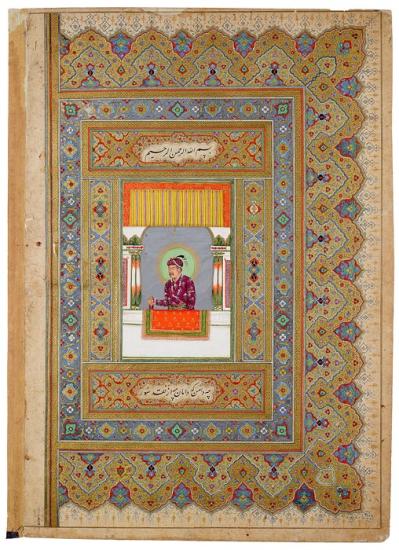
Akbar at an Audience Window
Leaf from the Read Mughal Album
Purchased by Pierpont Morgan, 1911
Akbar (r. 1556–1605) was one of the wisest and most important of the Mughal rulers. Although he preferred hunting to reading (he was illiterate) he sought out the learned. He employed over a hundred painters, and said he disliked men who hated painting. When it was mounted in the Read Mughal album, this portrait originally faced that of his son Salīm (see MS M.458.12), who was impatient to succeed him, even though his two brothers died early of alcoholism.
Below Akbar: In the name of God, the Merciful, the Compassionate / What skirt? It is a lap full of cash.
Above Salīm: In every ring, [of servitude] to him is happiness. / The year A.H. 1163 [A.D. 1749–50]
The Read Mughal Album
Pierpont Morgan purchased the Read Mughal album, along with a Persian album, from Sir Charles Hercules Read, Keeper of British and Medieval Antiquities at the British Museum, in 1911. The Morgan purchase consisted of thirty folios (including both Indian miniatures and the Mughal portraits presented here), but Read owned at least forty-eight others, now widely dispersed. The leaves were probably once bound in several lacquered bindings. The identity of their compiler has not been established, but many borders date from the eighteenth and nineteenth centuries. The Mughal emperors of India commissioned biographies and were frequently portrayed by artists. Here the paintings are presented in the order of the emperor's reigns rather than the dates of the miniatures, starting with Bābur (r. 1526–30), the Muslim founder of the dynasty, and ending with Shāh Jahān (r. 1628–58), builder of the Taj Mahal.
